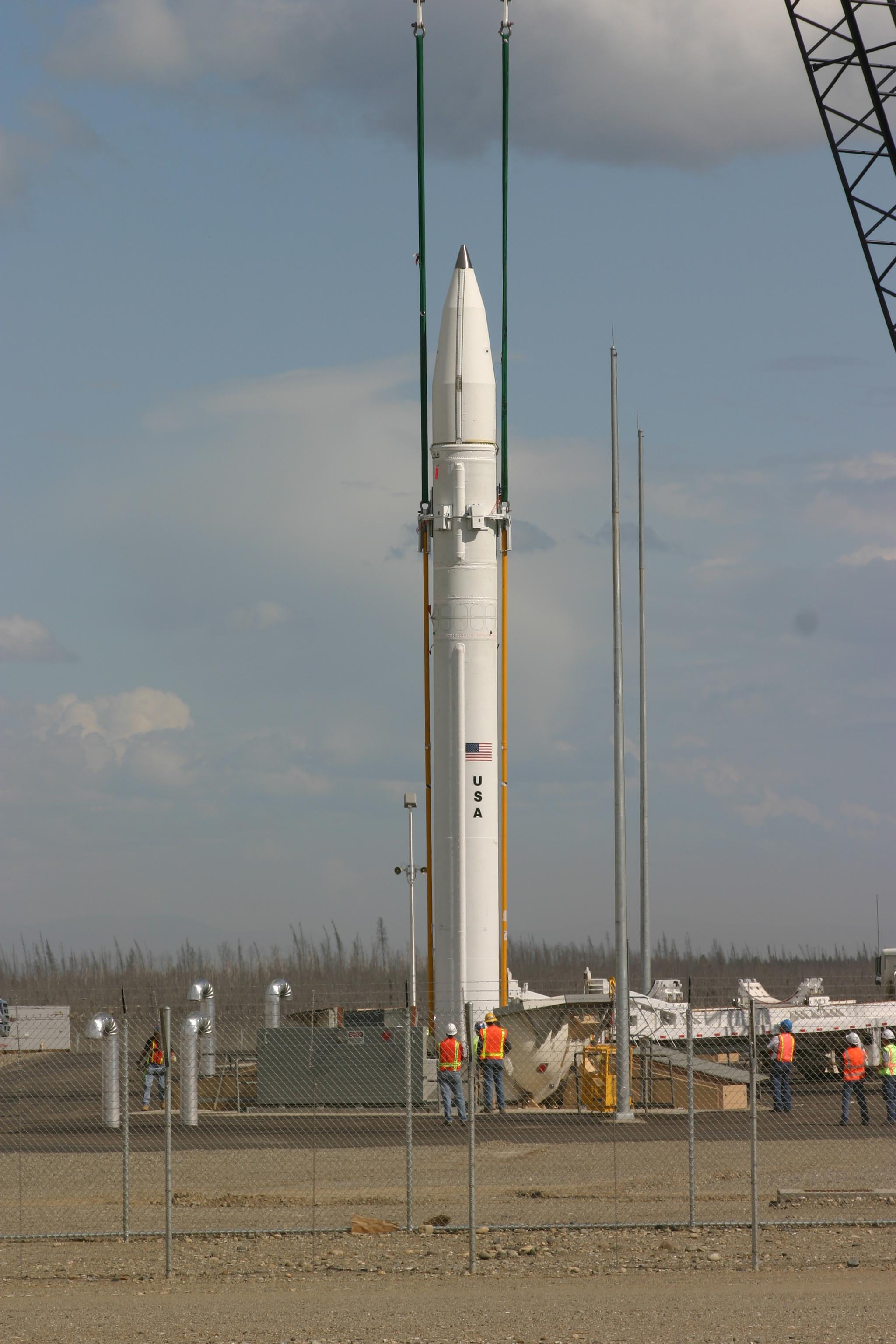|
Plug And Fight
Plug-and-fight is the military equivalent of plug and play as applied to commercial and personal computer systems. Plug-and-fight refers to the capability of certain large military systems such as the Medium Extended Air Defense System (MEADS) to automatically recognize and assemble various system elements, like sensors, weapons, and control nodes, into a single integrated supersystem or system-of-systems. Plug-and-fight systems can be rapidly reconfigured without interrupting operations – adding, removing, and rearranging system elements in response to evolving threats and changing defense strategies. The architecture of such modular systems is often described as netted-distributed. Sensors, shooters, and tactical operations centers (TOC) simply act as nodes on the network, and a military commander can dynamically add or subtract these elements as the situation dictates without shutting the system down. Plug-and-fight system elements connect to an open wired or wireless communica ... [...More Info...] [...Related Items...] OR: [Wikipedia] [Google] [Baidu] |
Plug And Play
In computing, a plug and play (PnP) device or computer bus is one with a specification that facilitates the recognition of a hardware component in a system without the need for physical device configuration or user intervention in resolving resource conflicts. The term "plug and play" has since been expanded to a wide variety of applications to which the same lack of user setup applies. Expansion devices are controlled and exchange data with the host system through defined memory or Input/output, I/O space port addresses, direct memory access channels, interrupt request lines and other mechanisms, which must be uniquely associated with a particular device to operate. Some computers provided unique combinations of these resources to each slot of a CPU cache, motherboard or backplane. Other designs provided all resources to all slots, and each peripheral device had its own address decoding for the registers or memory blocks it needed to communicate with the host system. Since fixed ... [...More Info...] [...Related Items...] OR: [Wikipedia] [Google] [Baidu] |
MIM-104 Patriot
The MIM-104 Patriot is a surface-to-air missile (SAM) system, the primary of its kind used by the United States Army and several allied states. It is manufactured by the U.S. defense contractor Raytheon and derives its name from the radar component of the weapon system. The AN/MPQ-53 at the heart of the system is known as the " Phased Array Tracking Radar to Intercept on Target", or PATRIOT. The Patriot system replaced the Nike Hercules system as the U.S. Army's primary High to Medium Air Defense (HIMAD) system and replaced the MIM-23 Hawk system as the U.S. Army's medium tactical air defense system. In addition to these roles, Patriot has been given the function of the U.S. Army's anti-ballistic missile (ABM) system, which is now Patriot's primary mission. The system is expected to stay fielded until at least 2040. Patriot uses an advanced aerial interceptor missile and high-performance radar systems. Patriot was developed at Redstone Arsenal in Huntsville, Alabama, which ha ... [...More Info...] [...Related Items...] OR: [Wikipedia] [Google] [Baidu] |
AN/APG-81
The AN/APG-81 is an active electronically scanned array (AESA) radar system designed by Northrop Grumman Electronic Systems for the Lockheed Martin F-35 Lightning II. The Joint Strike Fighter AN/APG-81 AESA radar is a result of the US government's competition for the world's largest AESA acquisition contract. Westinghouse Electronic Systems (acquired by Northrop Grumman in 1996) and Hughes Aircraft (acquired by Raytheon in 1997) received contracts for the development of the Multifunction Integrated RF System/Multifunction Array (MIRFS/MFA) in February 1996. Lockheed Martin and Northrop Grumman were selected as the winners of the Joint Strike Fighter competition; The System Development and Demonstration (SDD) contract was announced on 26 October 2001. The AN/APG-81 is a successor radar to the F-22's AN/APG-77. Over three thousand AN/APG-81 AESA radars are expected to be ordered for the F-35, with production to run beyond 2035, and including large quantities of international order ... [...More Info...] [...Related Items...] OR: [Wikipedia] [Google] [Baidu] |
Aegis Ballistic Missile Defense System
The Aegis Ballistic Missile Defense System (Aegis BMD or ABMD), also known as ''Sea-Based Midcourse'', is a United States Department of Defense Missile Defense Agency program developed to provide missile defense against short to intermediate-range ballistic missiles. The program is part of the United States national missile defense strategy and European NATO missile defence system. Aegis BMD is an expansion of the Aegis Combat System deployed on warships, designed to intercept ballistic missiles in post-boost phase and prior to reentry. Aegis BMD-equipped vessels can engage potential threats using the Standard Missile 3 mid-course interceptors and the Standard Missile 2 and Standard Missile 6 terminal-phase interceptors.Aegis BMD web page , [...More Info...] [...Related Items...] OR: [Wikipedia] [Google] [Baidu] |
AN/SPY-6
The AN/SPY-6, also known as the Air and Missile Defense Radar (AMDR), is an active electronically scanned array 3D radar under development for the United States Navy (USN). It will provide integrated air and missile defense for Flight III s. Variants are under development for retrofitting Flight IIA ''Arleigh Burke''s and for installation aboard s, s, and s. The first delivery of the AN/SPY-6 to the USN took place on 20 July 2020. Development On 10 October 2013, "Raytheon Company (RTN) asawarded an almost $386m cost-plus-incentive-fee contract for the Engineering and Manufacturing Development (EMD) phase design, development, integration, test, and delivery of Air and Missile Defense S-band Radar (AMDR-S) and Radar Suite Controller (RSC)." In September 2010, the Navy awarded technology development contracts to Northrop Grumman, Lockheed Martin, and Raytheon to develop the S-band radar and radar suite controller (RSC). X-band radar development reportedly will come under separate ... [...More Info...] [...Related Items...] OR: [Wikipedia] [Google] [Baidu] |
AN/SPY-1
The AN/SPY-1 is a United States Navy 3D radar system manufactured by Lockheed Martin. The array is a passive electronically scanned system and a key component of the Aegis Combat System. The system is computer controlled and uses four complementary antennas to provide 360-degree coverage. The system was first installed in 1973 on and entered active service in 1983 as the SPY-1A on . The -1A was installed on ships up to CG-58, with the -1B upgrade first installed on in 1986. The upgraded -1B(V) was retrofitted to existing ships from CG-59 up to the last, . Description The first production model of the SPY-1 series is SPY-1, which forms the baseline configuration of all subsequent SPY-1 radars. SPY-1A has four antenna arrays in two separate deckhouses, with each antenna array containing 148 modules. Each module contains up to 32 radiating elements and phase shifters, and modules are paired to form transmitting and receiving sub-arrays, which are grouped into 32 transmitting and 6 ... [...More Info...] [...Related Items...] OR: [Wikipedia] [Google] [Baidu] |
Ground-Based Midcourse Defense
Ground-Based Midcourse Defense (GMD) is the United States' anti-ballistic missile system for intercepting incoming warheads in space, during the midcourse phase of ballistic trajectory flight. It is a major component of the American missile defense strategy to counter ballistic missiles, including intercontinental ballistic missiles (ICBMs) carrying nuclear, chemical, biological or conventional warheads. The system is deployed in military bases in the states of Alaska and California; in 2018 comprising 44 interceptors and spanning 15 time zones with sensors on land, at sea, and in orbit. In 2019, a missile defense review requested that 20 additional ground-based interceptors be based in Alaska. GMD is administered by the U.S. Missile Defense Agency (MDA), while the operational control and execution is provided by the U.S. Army, and support functions are provided by the U.S. Air Force. Previously known as National Missile Defense (NMD), the name was changed in 2002 to different ... [...More Info...] [...Related Items...] OR: [Wikipedia] [Google] [Baidu] |
Terminal High Altitude Area Defense
Terminal High Altitude Area Defense (THAAD), formerly Theater High Altitude Area Defense, is an American anti-ballistic missile defense system designed to shoot down short-, medium-, and intermediate-range ballistic missiles in their terminal phase (descent or reentry) by intercepting with a hit-to-kill approach. THAAD was developed after the experience of Iraq's Scud missile attacks during the Gulf War in 1991. The THAAD interceptor carries no warhead, instead relying on its kinetic energy of impact to destroy the incoming missile. Originally a United States Army program, THAAD has come under the umbrella of the Missile Defense Agency. The Navy has a similar program, the sea-based Aegis Ballistic Missile Defense System, which also has a land component ("Aegis Ashore"). THAAD was originally scheduled for deployment in 2012, but initial deployment took place in May 2008. THAAD has been deployed in the United Arab Emirates, Israel, Romania, and South Korea. On 17 January 2022, ... [...More Info...] [...Related Items...] OR: [Wikipedia] [Google] [Baidu] |
AN/TPY-2
The AN/TPY-2 Surveillance Transportable Radar, also called the Forward Based X-Band Transportable (FBX-T) is a long-range, very high-altitude active digital antenna array X band surveillance radar designed to add a tier to existing missile and air defence systems. It has a range of . Made by Raytheon, it is the primary radar for the Terminal High Altitude Area Defense (THAAD) missile system, but also cues the AN/MPQ-53 radar of the MIM-104 Patriot system. Patriot PAC-3 is a lower-altitude missile and air defense system than THAAD. The AN/TPY-2 is a missile-defense radar that can detect, classify, track and intercept ballistic missiles. It has two operating modes – one to detect ballistic missiles as they rise, and another that can guide interceptors toward a descending warhead. Once it detects the missile, it acquires it, tracks it, and uses its powerful radar and complex computer algorithms to discriminate between the warhead and non-threats such as countermeasures in order ... [...More Info...] [...Related Items...] OR: [Wikipedia] [Google] [Baidu] |






.jpg)